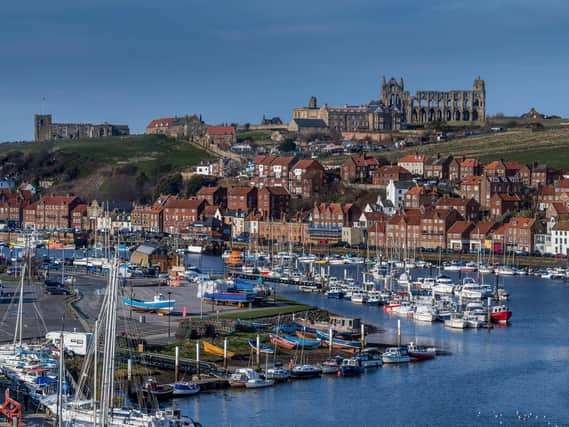A new saltmarsh habitat is to be created near Whitby as part of Beach Esk project


The Beach Esk project will also work with landowners or businesses suspected of being responsible for waste products entering the river to prevent it becoming polluted.
The Esk is a vital habitat for species including salmon and sea trout - fishing in the tidal section between Ruswarp and Whitby has been banned since 1997 after stocks dwindled alarmingly - and is the only river in Yorkshire that is home to the rare freshwater pearl mussel.
Advertisement
Hide AdAdvertisement
Hide AdSaltmarshes are important ecosystems that provide food and shelter for a range of species, but historically have been lost to human activities such as agriculture, land reclamation and salt production. They can also act as natural flood defences.
Several locations are currently being assessed for their suitability for the development of the new saltmarsh by the Environment Agency and their project partners Groundwork and the Yorkshire Wildlife Trust.
There will also be engagement with those responsible for pollution in the river and its tributary streams in the North York Moors.
When the saltmarsh habitat has been created, there will be new public footpaths opened across the estuary to enable visitor access, though the marsh itself will be out of bounds.
Advertisement
Hide AdAdvertisement
Hide AdGovernment funding for the project was confirmed in November.
Project manager Allison Pierre said: "Saltmarsh is a valuable, priority habitat which is home to many species specifically adapted to live here. In the past there would have been saltmarsh habitat along many of our estuaries, but historic land reclamation has led to a huge loss of this type of habitat in many places, making it now quite rare in the UK.
"Saltmarsh provides habitat for a range of invertebrates, and provides breeding and feeding habitat for many bird species, including shelducks, curlews, bar-tailed godwits, wigeon, teal, golden plover, lapwing and oystercatcher. The intertidal habitat also provides shelter for juvenile fish which will increase fish numbers in the River Esk and support the freshwater pearl mussels.
"Areas of land have been identified as suitable locations and we are currently in discussions with landowners to identify saltmarsh opportunities. The sites that we are currently investigating already contain small communities of saltmarsh plants.
Advertisement
Hide AdAdvertisement
Hide Ad"The project will create the right conditions to allow the saltmarsh plants to re-colonise and the habitat to expand. This may be achieved by digging ditches (creeks) and creating scrapes in the land to allow the sea water to inundate it or by extending terraces into the estuary using methods such as fixing in brushwood bundles and encouraging sediment to build up within these.
"We do not anticipate there being public access onto the saltmarsh, but the sites should be visible from public footpaths so the public will be able to enjoy the benefits of increased flora and fauna.
"The project will work to identify sources of pollution and waste into the estuary. Once identified we will work with stakeholders to improve processes, change behaviours and reduce the impact to the water environment."
Comment Guidelines
National World encourages reader discussion on our stories. User feedback, insights and back-and-forth exchanges add a rich layer of context to reporting. Please review our Community Guidelines before commenting.